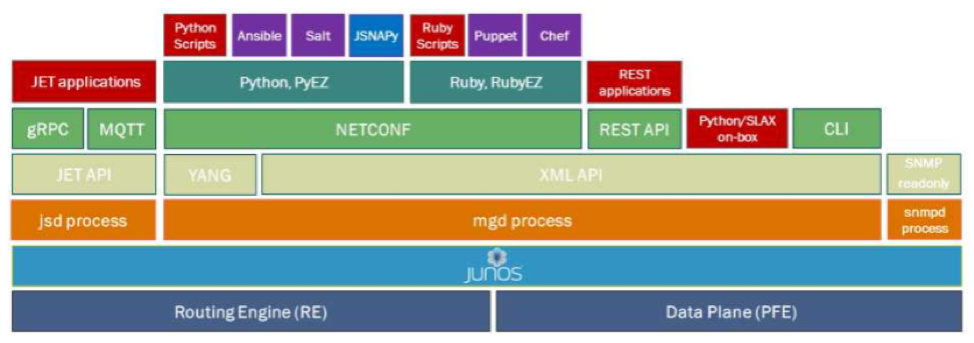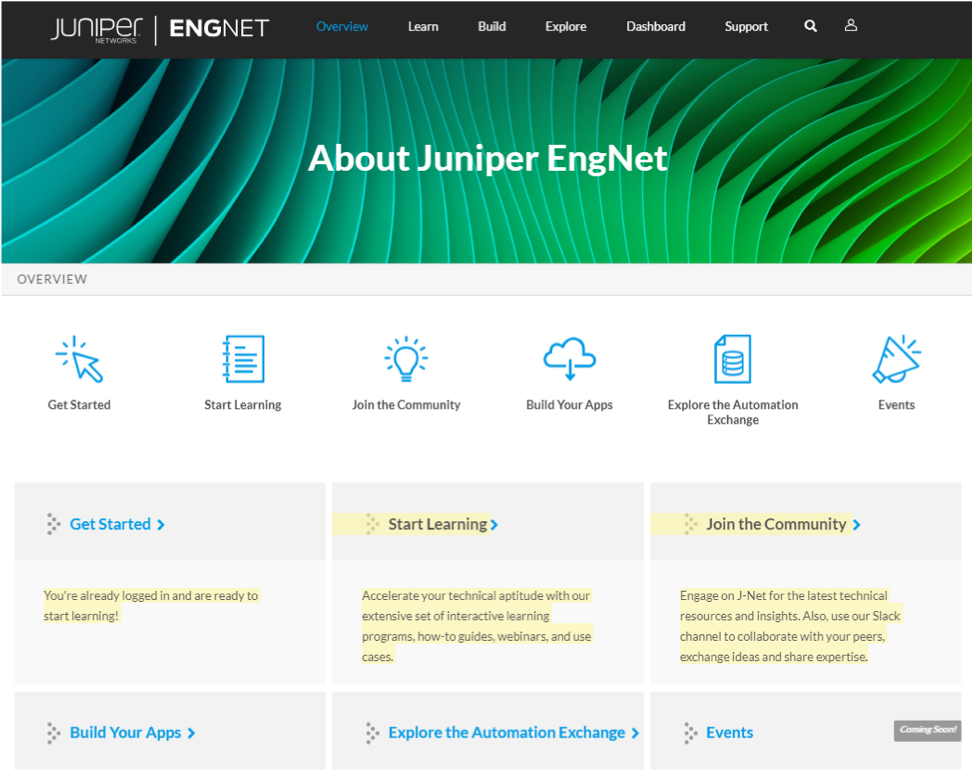Stefan Fouant is a Juniper Ambassador and recognized expert within the community. The following post represents his own personal thoughts.
DevOps and automation are taking the world by storm. There isn’t a day that goes by that I don’t hear talk about Infrastructure as Code (IaC), incorporating CI/CD pipelines into network operations or the need to evolve engineering skills to fulfill the needs of the emerging Network Reliability Engineering (NRE) role. It seems that everywhere you look, organizations are talking about the need to incorporate automation processes into their workflows in order to ease the burden of typical network operations – everything from automating the configurations to facilitating the management of and easing the deployment of both physical and virtual devices in the network. Businesses want to move in this direction for the obvious benefits — lowered OpEx, increased speed and agility, improved quality and to gain a competitive edge.
When looking at the trends around DevOps and automation, much has changed since the early days, when the folks at Flickr envisioned an environment where they could do ten deploys per day. When their ideas proved to be successful, the DevOps movement was born and automation was a key component of their success. Today, whole industries are replacing their legacy waterfall methodologies and moving towards more expedient and reliable methods, such as agile and lean development models. Companies such as Amazon and Netflix are successfully rolling out over 100 changes per day by adopting these principles. No matter how you look at it, it’s clear that adoption of automation principles has exploded in just a few short years.
One of the reasons I have been such a huge fan of Juniper Networks over the years is due to their firm commitment towards giving customers a choice – whether it’s routing protocols, platforms or various fabric options, there is always a flexible option to meet the customer’s need. And with regards to automation, Juniper certainly does not disappoint. Of all the networking vendors, Juniper is without a doubt, the most committed to supporting automation with as many options as possible – whether you’re using Python, Ansible, Salt, Ruby, Puppet, Chef, SLAX, XSLT or any number of open APIs for automation scripting and configuration management, there is an option for you.
 With all these supported options, it’s clear that Juniper has solved the “technology” piece of the equation. So with that issue out of the way, what’s preventing further adoption of automation practices in the network isn’t technology, but education and collaboration. Customers know they need to move in this direction, but it’s hard to navigate the myriad options and difficult to know where to start. This has resulted in automation being a mostly specialized practice, relegated to just a few individuals.
With all these supported options, it’s clear that Juniper has solved the “technology” piece of the equation. So with that issue out of the way, what’s preventing further adoption of automation practices in the network isn’t technology, but education and collaboration. Customers know they need to move in this direction, but it’s hard to navigate the myriad options and difficult to know where to start. This has resulted in automation being a mostly specialized practice, relegated to just a few individuals.
To address this issue, Juniper today announced Juniper EngNet – a landmark initiative and collaborative community that includes tools, libraries, interactive learning guides, webinars and an open application exchange – all with the express purpose of aiding in the adoption and acceleration of automation in the workforce. With Juniper EngNet, Juniper’s aim is to help foster the learning that individuals need to elevate their skills and careers, while at the same time ushering further use of automation so that it becomes a mainstream practice within organizations. Having participated in the early beta previews of EngNet, I can say without doubt, it’s tools like these that will empower us to be more successful in our jobs and move the automation needle forward.

In addition to EngNet, Juniper also announced a number of other initiatives:
- NRE Labs, a web-based automation curriculum focused on the emerging network reliability engineering (NRE) role, providing engineers and network operators with quick-paced and interactive network automation lessons that focus on real-life workflows like troubleshooting, verification and configuration.
- Cloud Customer Certification Labs (CCL), a platform in the Juniper cloud to allow customers to design and run a virtual lab environment consisting of networking systems, traffic generators and other network automation tools, such as Juniper’s Network Implementation and Test Automation (NITA).
- Additional Professional Services to assist customers in automating their testing environments.
As a former instructor and JNCIE Proctor within Juniper’s Education Services department, educational resources and communities that allow for the open sharing of information are very near and dear to my heart. Furthermore, as a lifelong student with a busy schedule, I value the ability to quickly find what I’m looking for and the ability to leverage the tools developed and knowledge gained by others. The ability to test in lab environments or leverage additional help from Professional Services is something that every organization, whether large or small, can take advantage of. It is initiatives like this that will provide the resources that customers need to take their automation journey to the next level.
The late English biographer, writer and poet Dr. Samuel Johnson once said, “The next best thing to knowing something is knowing where to find it”. With today’s announcement of Juniper’s EngNet and other automation initiatives, the goal is to provide just that – a clearinghouse for the open exchange of information around DevOps and automation so that customers know exactly where to go to get information, and where to turn when they need to get additional help. I hope you all are as excited as I am about these new initiatives and I look forward to seeing you all on Juniper EngNet and evolving our skills and knowledge together!
























